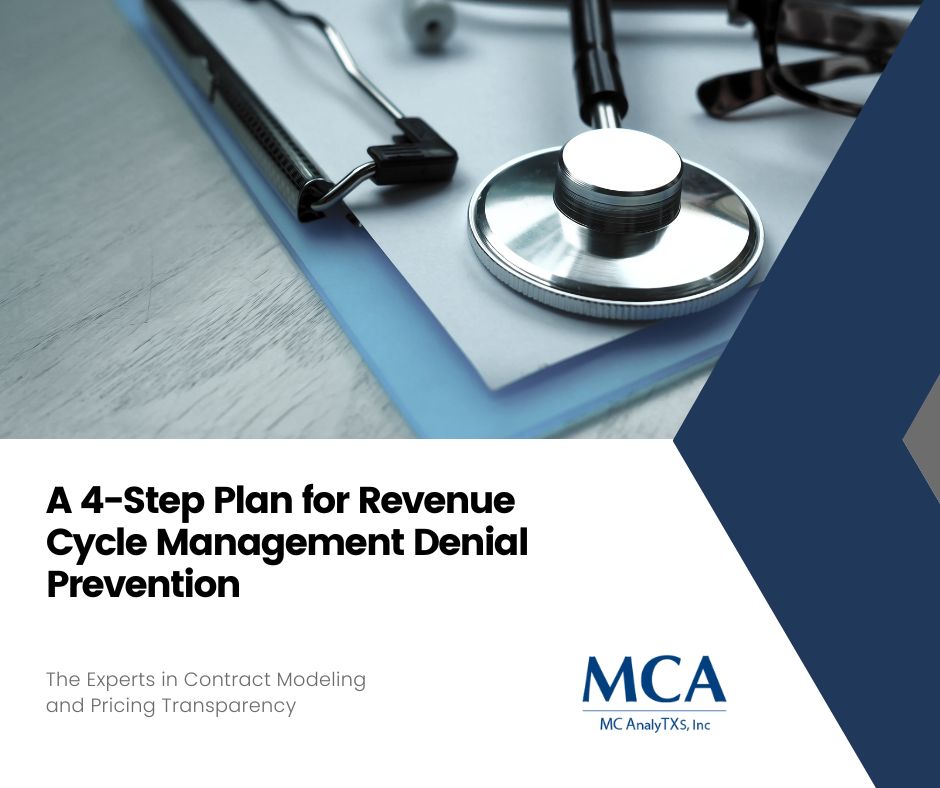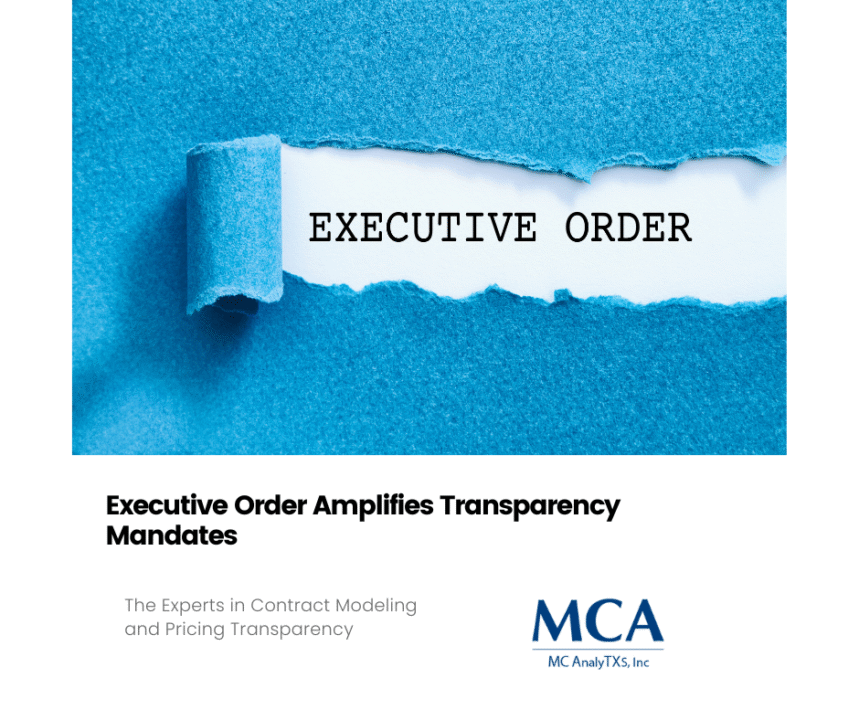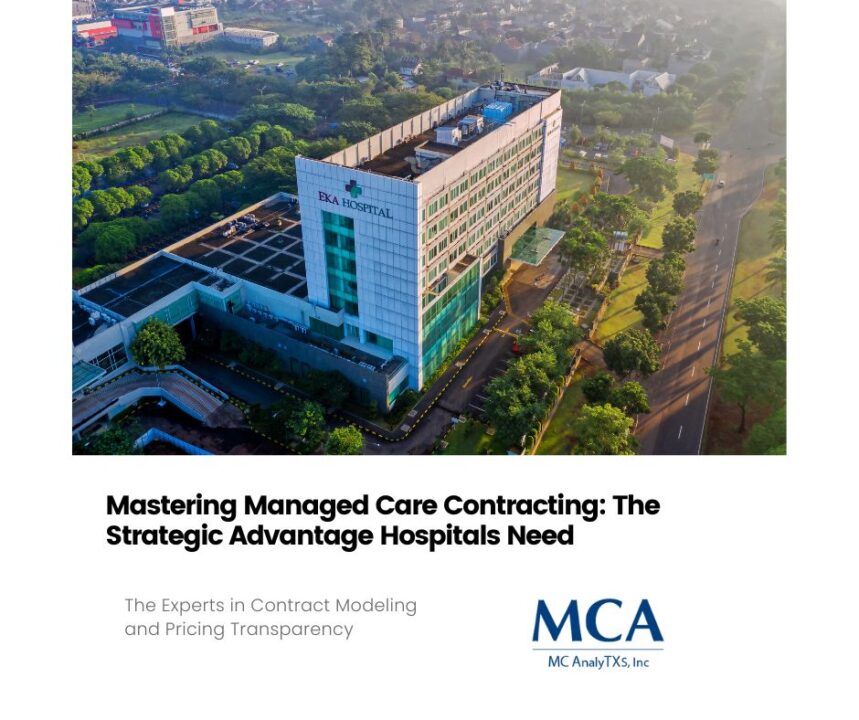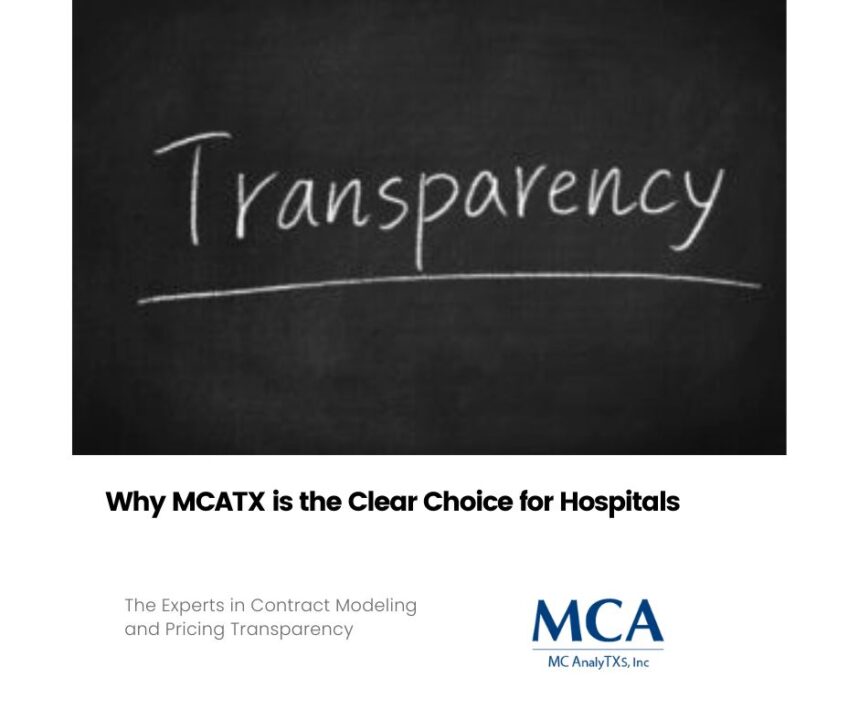
Improving Revenue Integrity in Healthcare: Challenges and Solutions
February 21, 2024
Strategies for Patient Acquisition: Insights from Top Health Systems
February 26, 2024In the intricate web of healthcare financial transactions, Revenue Cycle Management (RCM) stands as the rebar—often unseen yet crucial for form and function. But unlike construction, where rebar is a physical necessity, the art of RCM is almost an act of clairvoyance. At the juncture of claims processing, we find a monumental challenge: denial prevention—a subject most healthcare professionals wish was as straightforward as a dose of aspirin. Yet, given the complexity of coding requirements, payer policies, and the ever-evolving landscape of regulations, the issue of denial management is far from simple.
This article endeavors to outline a comprehensive plan for RCM denial prevention. Geared toward healthcare professionals immersed in the nitty-gritty of RCM, this 4-step approach champions proactive strategies, aiming to fortify your financial foundations and enhance operational resilience.
Step 1: Assess Current Processes
The proverbial first move in any strategic plan is knowing where you stand. In the case of RCM denial prevention, an exhaustive review of current processes is non-negotiable. Here’s how you can start:
Gather Historical Data
Begin by collecting denial data from the past year. Categorize denials by reason—whether due to coding errors, eligibility issues, or lack of pre-authorization.
Analyze Impact
Quantify the financial impact of denials. What percentage of claims is denied? How much revenue does this translate to? Understanding the scope of the problem is a crucial motivator for change.
Root Cause Analysis
Once you’ve identified denial trends, dig deeper. What are the root causes behind common denials? It’s here that you might unearth workflow inefficiencies, misinterpretations of coding guidelines, or systemic issues within your billing department.
Documentation Checks
Perform a spot check on documentation practices. Ensure that claims are supported by thorough and compliant documentation. In many cases, insufficient or inaccurate documentation is a major trigger for denials.
Once armed with this data, you’re ready to pivot to the corrective phase of denial prevention.
Step 2: Implement Training and Education
You can have the most sophisticated billing system in the world, but it’s only as good as the people operating it. Hence, the second step in the denial prevention odyssey is all about the human element.
Coding Guidelines
Ensure that your billing and coding staff are well-versed in the latest CPT, ICD-10, and HCPCS coding guidelines. This is an ever-evolving domain, so frequent training sessions and updates are imperative.
Documentation Best Practices
Host workshops that focus on documentation integrity. Interactive sessions that simulate various scenarios can be particularly effective in illustrating the nuances of compliant documentation.
Payer Policy Awareness
Create channels for consistent communication of payer policy updates. Oftentimes, denials stem from a lack of understanding or awareness of recent policy changes within your team.
Team Collaboration
Encourage transparency and collaboration between coders, billers, and clinical staff. Establishing a culture where departments can share insights and knowledge can lead to more comprehensive and accurate claims submissions.
Education is the cornerstone of empowered action. By investing in your team’s knowledge, you’re fostering a culture of ongoing improvement—a trait indispensable in the dynamic realm of healthcare.
Step 3: Utilize Technology Solutions
With a foundation of data and an educated team, the next natural progression is to leverage technological advancements for enhanced denial prevention.
Denial Management Software
Deploy robust denial management software that not only tracks and categorizes denials but also provides insights on how to prevent them.
Automate Coding Processes
Consider automated coding solutions to reduce errors associated with manual data entry. Automation tools can significantly expedite claims processing while minimizing the risk of coding-related denials.
Utilize Predictive Analytics
Harness the power of predictive analytics to foresee potential denial triggers. By analyzing historical data, these tools can flag claims that are at a higher risk for denial, allowing you to intervene before the claim is submitted.
Integrate Clinical and Financial Systems
Ensure that your clinical and financial systems are integrated to facilitate efficient information flow. This can help in reducing denials caused by the disconnect between patient treatment and billing.
Investment in such technologies is not only a play for efficiency but a calculated step toward preempting denials before they happen.
Step 4: Continuous Monitoring and Improvement
The final step of our denial prevention plan is perhaps the most profound—it’s not a step forward but a cycle that perpetually loops back on itself. Continuous Monitoring and Improvement (CMI) is more than a business plan; it’s an ethos.
Regular Denial Analysis
Establish a cadence for reviewing denial data. Set monthly or quarterly checkpoints to identify new or recurring denial trends, and adjust your approach accordingly.
Process Reevaluation
Be willing to adapt. If certain processes or workflows consistently lead to denials, reengineer them. Agility in refining your RCM operations is key to staying ahead of this ever-evolving field.
Staff Refresher Training Sessions
Hold regular training sessions to not only update your team on the latest coding and billing protocols but also to reinforce best practices and lessons learned from past denials.
Celebrate Successes
Recognize and celebrate improvements in your denial rates. Positive reinforcement can boost team morale and motivate staff to maintain high standards.
Institutionalizing this continuous cycle of review, refinement, and recognition will ensure that your RCM is not just managing denials but actively preventing them.
Conclusion
In the world of healthcare RCM, denials are as common as they are costly. This 4-step plan is a roadmap. It maps a strategic route that navigates through the complexities of health finance, uniting data, education, technology, and perpetual vigilance to safeguard your revenue streams.
By investing time and resources in this proactive approach, you’re not merely responding to denials; you’re strategically evading them. In the end, a robust denial prevention strategy is not just about financial health; it’s about ensuring that your institution can focus on what matters most—patient care





